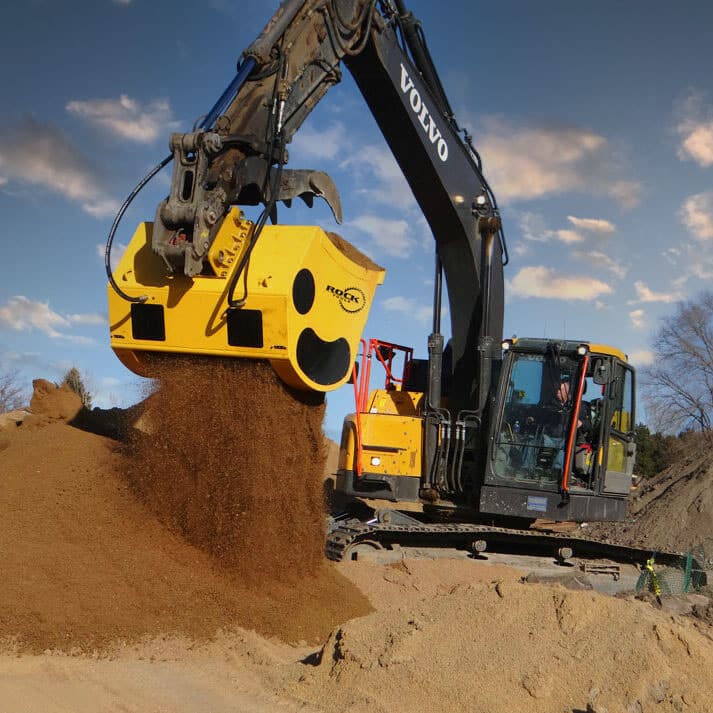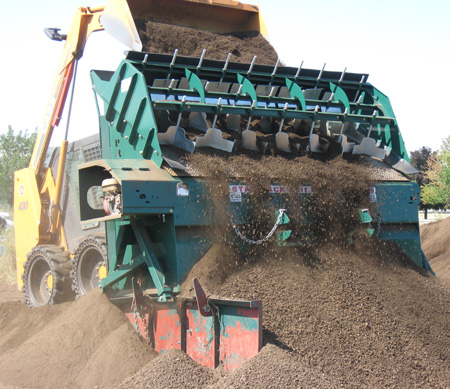Raise Your Tasks with a Premium Dirt Screen for Sale - Unmatched Efficiency Guaranteed
Raise Your Tasks with a Premium Dirt Screen for Sale - Unmatched Efficiency Guaranteed
Blog Article
Enhance Material Recuperation With State-Of-The-Art Dirt Screens for Recycling Facilities
In today's globe, where ecological sustainability is a pressing problem, recycling facilities play a crucial role in minimizing waste and conserving sources. Nevertheless, maximizing material recovery can be an intricate procedure, often prevented by the visibility of dirt and debris in the reusing stream. This is where cutting edge dust screens enter play, supplying an encouraging service to improve product recovery rates. By efficiently separating undesirable contaminants, these sophisticated screens hold the potential to transform recycling centers' operations. How specifically do dust displays enhance material recuperation? What are the key attributes that make them modern? And how can reusing centers apply them properly? In this conversation, we will check out the responses to these concerns and explore real-life case researches that highlight the successful combination of dust displays in reusing centers. Prepare to find the transformative power of cutting edge dust screens and their impact on enhancing product healing.
The Relevance of Dust Screens in Recycling Facilities
Dust screens play an essential role in recycling facilities by effectively dividing dirt and various other impurities from recyclable materials. These displays, also known as trommel screens, are developed to effectively get rid of unwanted particles and guarantee that useful and just tidy materials are processed better.
The key feature of dirt screens is to separate bigger items of dirt, rocks, and various other non-recyclable products from the stream of products. By doing so, they prevent these impurities from entering the recycling process and possibly destructive devices or compromising the quality of the end product.
In addition, dirt screens assist to boost the total performance of recycling operations. By eliminating dirt and various other pollutants early while doing so, the displays lower the quantity of manual labor needed to arrange and clean up the materials later on. This not only conserves time yet also raises and reduces prices productivity.
Additionally, the usage of dust screens adds to ecological sustainability. By making certain that just clean and unpolluted products are refined, recycling facilities can produce higher-quality recycled products. This, in turn, urges making use of recycled products in different markets, minimizing the need for virgin resources and minimizing the environmental impact of resource removal and manufacturing procedures.
Just How Dust Screens Improve Product Recovery
Utilizing dirt displays in reusing centers considerably enhances the procedure of material recovery. These displays play a crucial duty in dividing dirt, particles, and other undesirable materials from the recyclable stream, causing enhanced efficiency and higher top quality output.
Among the primary ways in which dust displays improve material recovery is by getting rid of pollutants that can impede the reusing process. Dust, rocks, and other non-recyclable things can trigger damages to devices, lower the efficiency of subsequent sorting processes, and contaminate the final recycled materials. By properly screening out these impurities, dust displays aid make sure that the recyclable materials stay pure and of premium quality.
Furthermore, dust screens make it possible for reusing centers to recover a higher amount of beneficial products. By removing dirt and particles, the screens permit a much more exact sorting procedure, increasing the recovery price of recyclable materials. This suggests that better resources can be redeemed and reused, minimizing the need for virgin materials and decreasing the environmental impact related to their extraction and manufacturing.
Along with improving material healing, dirt displays likewise add to the general performance of recycling facilities. By protecting against tools damage and reducing downtime triggered by obstructions and blockages, these displays aid keep a smooth and uninterrupted recycling procedure. This raised effectiveness equates into expense savings and permits greater throughput, inevitably enhancing the profitability and sustainability of recycling operations.
Secret Functions of State-of-the-Art Dirt Screens
To additionally boost the performance and performance of product healing in recycling facilities, cutting edge dirt screens are outfitted with key functions that optimize the splitting up procedure and guarantee the highest top quality output (dirt screen for sale). These functions consist of visit this website sophisticated testing modern technology, personalized setups, and durable construction
One secret feature of cutting edge dirt screens is their sophisticated testing modern technology. These displays are made with precision-engineered mesh or perforated plates that successfully separate dirt and debris from the recyclable materials. The size and spacing of the openings in the screens can be customized to fit various sorts of products, permitting efficient separation and optimum recuperation rates.
Another important feature of these dirt screens is their personalized setups. Recycling centers can adjust the rate, angle, and amplitude of the screens to enhance the splitting up procedure. This adaptability permits drivers to adjust the screens according to the certain requirements of the products being refined, leading to improved accuracy and higher recuperation rates.
Moreover, state-of-the-art dust displays are developed with robust construction to withstand the rough conditions of reusing facilities. They are made from resilient products such as stainless steel or high-strength alloys, making sure durability and minimal downtime due to upkeep or repairs. Additionally, these displays are designed with simple gain access to for cleansing and maintenance, reducing and helping with effective operations downtime.
Steps to Executing Dirt Screens in Recycling Facilities
What are the needed actions for integrating dust displays right into recycling facilities? Executing dirt displays in reusing centers involves a systematic approach to ensure efficient setup and operation. The adhering to are the required steps to effectively integrate dirt screens:
Evaluation: Conduct an extensive analysis of the center's needs and requirements to determine the suitable dirt screen specs. Consider elements such as material type, volume, and desired splitting up effectiveness.

Installation: Prepare the facility for the setup of the dirt displays. Adhere to manufacturer standards and ensure correct placement and assimilation with the reusing process.
Evaluating and Calibration: Once the dirt displays are installed, carry out extensive screening to make sure proper functioning. dirt screen for sale. Adjust the system to achieve preferred separation performance and lessen about his material loss
Training and Maintenance: Train personnel on operating and keeping the dust display system. Establish a normal maintenance schedule, consisting of cleaning and inspection, to ensure ideal efficiency and longevity.

Instance Researches: Successful Product Recuperation With Dirt Screens
Including dirt displays right into recycling centers has shown to be an effective technique for achieving efficient product healing, as shown by several study. Go Here These case research studies highlight the positive impact of dust displays on the general recycling process.
By executing dirt displays, the facility was able to significantly minimize the amount of contamination in their recyclable materials. The introduction of dust displays also helped to tear and minimize the wear on sorting tools, lowering maintenance expenses and downtime.
One more study showcases a country recycling facility that battled with too much dust and debris in their inbound waste stream. By mounting dust displays, the facility was able to eliminate a huge portion of the undesirable products, leading to cleaner recyclables and improved efficiency in the sorting procedure. This resulted in greater material recovery prices and decreased waste sent out to the land fill.
These instance researches demonstrate that including dust displays into recycling centers can have a substantial favorable effect on product recuperation. By efficiently eliminating dust, particles, and other contaminants, recycling facilities can improve their total recycling prices, reduce land fill waste, and take full advantage of the worth of recovered materials.
Conclusion
Finally, the use of cutting edge dirt displays in reusing centers is critical for boosting product recovery. These displays effectively get rid of dirt and particles, enabling for the efficient separation and recovery of beneficial materials. By executing dust screens, reusing facilities can substantially enhance their reusing processes and add to a more lasting future.
One of the primary methods in which dust screens improve material recuperation is by getting rid of contaminants that can impede the recycling procedure. By properly screening out these impurities, dirt displays assist guarantee that the recyclable products stay pure and of high quality.
Furthermore, dirt displays enable recycling centers to recoup a higher quantity of useful products.In enhancement to enhancing product healing, dirt screens likewise contribute to the general performance of reusing facilities.In conclusion, the use of state-of-the-art dust screens in recycling centers is essential for improving product recovery.
Report this page